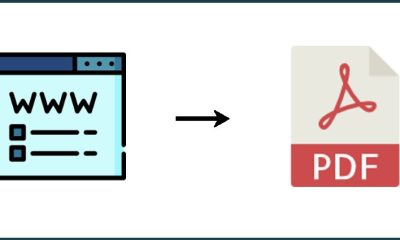Career Tips
Top Things Employers Look For In A LinkedIn Profile

Let us look at some top tips on how you can best optimize their LinkedIn pages to get more job offers from recruiters;
Create an All-Star LinkedIn profile
According to Ian Wilkinson, the best approach to improve your LinkedIn is to get all-star status on your LinkedIn profile.
But what exactly is a LinkedIn All-Star profile? LinkedIn offers five status categories that determine how full your LinkedIn profile is. Beginner, Intermediate, Advanced, Expert, and All-Star are the levels.
According to LinkedIn, people with All-Star profiles are 40 times more likely to obtain chances, such as job offers and new contacts, through LinkedIn.
To achieve this position and attract companies to your LinkedIn profile, there are a few things you need make sure it possesses.
- Use A professional headshot
Uploading a quality photo might help recruiters and companies find your profile. Wilkinson recommended that there are various dos and don’ts for a good LinkedIn photo.
DO:
- Look relaxed and approachable and make sure to smile. Employers will be more likely to click on your profile if you have an inviting presence.
- Dress smartly. Whether you choose to wear a full suit or simply a smart shirt is really up to you, but no employer will look down on you for dressing smartly.
DON’T:
- Use a cropped group picture as your profile picture. This will often be obvious to employers and recruiters and will make you look unprofessional.
- Have a distracting background. While this may be appropriate for other social media websites, LinkedIn is a site for networking professionally so a plain background is preferable.
Wilkinson said: “We would suggest that the best type of image to use will be a headshot where you face occupies roughly 60% of the screen”.
- Descriptions of professional accomplishments
Filling up your professional history is similar to preparing a CV, and it is rarely sufficient to simply add the firm names and dates of employment.
When writing this section, you should include both information about the positions you’ve held and “accomplishments in these positions if they’re relevant to the types of roles you’re applying for”, advised Wilkinson.
He said that it’s important to focus more on the value that you added to the company, instead of just describing the everyday tasks of the role.
“Where you’re talking about specific roles where you may have held responsibilities, try to use strong verbs and action words like ‘managed’, ‘led’ and ‘grew’”, he said. “These types of action words are much more attractive to recruiters than passive raises like ‘responsible for’, or even just ‘duties included’.”
According to Wilkinson, these positions do not have to be professional work experience positions, but could be positions in a certain society or group at university where the responsibilities held are comparable to those in the career you’re now looking for.
Putting industry keywords into your profile can also help you stand out, said Wilkinson, even if you don’t have a great deal of experience. “It’ll ensure that your profile shows up in many more search results,” he said.
- A friendly, to-the-point summary
Your summary is prominently shown on your profile, it is critical that you get it right. The summary’s purpose is to provide recruiters and employers with a brief overview of who you are and what you do.
“Your summary should encapsulate your experience, your strengths, your skills and your vision for your career,” explained Wilkinson. “Ideally you want the writing style to be really conversational and friendly and certainly try to avoid being technical,” he added.
Your summary can be as many as 2000 words, but most people use less than half of this. The summary should just sum up your profile and should be straightforward and easy to read.
- Five or more skills – even better if they’re endorsed!
To achieve All-Star LinkedIn status, you must add at least five skills to your LinkedIn profile’s skills section. These should be skills that you believe you have. This will enhance your exposure on LinkedIn and make you appear in more searches.
“Be quite strategic when you’re listing skills,” said Wilkinson. “List the ones that are important in your industry or profession over other things and try to keep them relevant to your current career goals.”
You can then get endorsements on these skills. This is done by your contacts on the site, which may be your work colleagues, managers, friends and peers from university or other professional contacts.
On gaining endorsements, Wilkinson advised: “if you endorse the skills of other people, they’re far more far more likely to lend their support and endorse yours too. You can also ask people that you’ve worked for previously to provide endorsements.”
- Detailed descriptions of your education
Filling in the specifics of your schooling is an important element of constructing your LinkedIn profile and, as a recent graduate, may be one of the first parts of your profile that an employer would look at.
In addition to the fundamental characteristics of your degree, you should include any honors or distinctions you have received, any relevant extracurricular activities, and any applicable modules.
“So, for example, if you’re looking for a marketing job, tie in relevant details from your time at university such as writing for a university group, or publication or association,” said Wilkinson.
- A compelling headline
You have a maximum of 120 characters for this area, which is an excellent way to distinguish yourself from others.
“Use the headline as an opportunity to highlight your expertise and your individuality instead of just listing your university or your job title and the company you’re currently working for,” advised Wilkinson.
- Plenty of connections
You must have at least 50 connections on LinkedIn to get the prestigious All-Star title.
Where can you locate these connections? They could be previous coworkers, lecturers, volunteers, managers, colleagues, university pals, or school friends.
“Find some useful connections will endorse your skills and background and remember it’s quality over quantity,” said Wilkinson. “Look at organizations that frequently recruit graduates and look at well-known industry influences. Keep track of what they’re posting, connect with them when posting insightful comments about their content.”
- An active LinkedIn profile
LinkedIn has 20 million companies and 14 million jobs advertised at any given moment. This makes LinkedIn a wonderful tool for helping you obtain a graduation employment, but you must use it!
A good way to get the attention of these companies is to actively use the website. “Post updates, articles, share news, comment on other people’s content, join industry groups and give and receive recommendations frequently,” said Wilkinson.
LinkedIn is not meant to be used like a CV, updated infrequently and forgotten about it most of the time.
“Use it as a living breathing tool to continue to develop your business network,” Wilkinson recommended, adding: “Try to make it, if not a daily habit, then something you visit two or three times a week.”






















